Carmel Politics Take on an Indianapolis’ Flavor; The Use of Non-Profit Corporations to Avoid Accountability and Public Scrutiny
The front page of the Indianapolis Star has a story entitled “A Little Too Cozy in Carmel?” . To summarize the story, recently the Carmel Redevelopment Commission approved giving $400,000 in taxpayer money to the Carmel Performing Arts Foundation, Inc., so the foundation can do various things, including hiring a new artistic director for the Performing Arts Center in Carmel.
When asked how much the new aristic director, Michael Feinstein, was going to make, Foundation Director Nancy Heck responded that it was none of the public’s business – even though as the Star points out, Feinstein would be paid with public money.
A troublesome twist to this public-private setup is that Carmel Mayor James Brainard is one of the founding directors and an officer in the Carmel Performing Arts Foundation. Heck, also a founding member, is the City’s spokesperson. A third officer/founding member is Douglas Haney, who is Carmel’s attorney. Heck and Haney both receive their positions through appointment by Mayor Brainard, as do a majority of members of the Carmel Redevelopment Commission.
Those familiar with how Indianapolis City-County government operates would not bat an eye at the use of a non-profit to distribute Carmel taxpayer money. There is a whole set of non-profit corporations who do just that her in Indianapolis and which enjoy a very cozy relationship with the city’s government. The distribution network works like this: the Mayor and Council take taxpayer money and give it to the non-profits for distribution to their customers. The directors and officers of those non-profits, pay themselves, the other officers ,and top employees, lavish salaries and benefits. Those folks kick back money to the elected officials in the form of political contributions. The non-profits also hire politically-connected law firms which also kick back money to the politicians, which campaign contributions originated as, you guessed it, taxpayer money. The non-profits also provide job for ex-politicians and administration members. With the relationship between public and private greased by political contributions and the hiring of ex-politicos, this elite power structure remains in place regardless of whether the City is headed by Democrats or Republicans.
Using non-profits instead of government to distribute taxpayer money, opens the door to the misuse of our tax dollars. These non-profits are not subject to the same scrutiny as a government entity would have. While government workers receive modest salaries to distribute grant money, the nonprofits corporations, despite their name, have no such limitation and often pay their directors and top employees extremely well as has been reported repeatedly on this blog. Even though organizations like the Arts Council of Indianapolis, Indianapolis Downtown, Inc., and the Children’s Choir brag about the service they provide to their clients (which they often call “stakeholders”) the fact is only a small percentage of tax money filter down through the non-profits to those the nonprofits claim to be helping. Their number one client is themselves and the fact is demonstrated by tax returns which show the incredible administrative costs (including salaries and benefits) these nonprofits pay. Several, such as the Arts Council, also have millions of tax dollars stashed away in securities and other investments rather than spend the money on helping out their clients.
While the situation with the Carmel Performing Arts Foundation is minor compared to the network of Indianapolis non-profits which siphon off millions of taxpayer dollars, certainly the conflict of interest involved is no minor matter. It is astonishing that Mayor Brainard sees no conflict of interest in the setup and that Heck, a Carmel City spokesperson in addition to being the director of the foundation, would make the crack that it is none of the public’s business how much taxpayer money is used to pay Feinstein.
While Heck thinks the salaries of top employees of the non-profit Carmel Performing Arts Foundation should not be publicly disclosed, Congress and the Internal Revenue Service holds a different position. In its next tax return, which is public record, the foundation will have to report Feinstein’s salary.
In its 2007 tax return, the Carmel Performing Arts Foundation noted that it received $136,500 from government and spent $166,937 on professional fundraising fees, including $110,200 to the Arts Consulting Group, Inc. of New York for “consulting fees.”
As I have said before, Carmel Mayor Jim Brainard’s big spending ways and ill-advised projects are going to put Carmel deeply in debt for generations to come. That’s bad enough. But Brainard is also playing deaf and dumb when it comes to the very legitimate complaints that the structure of the Carmel Performing Arts Center and its relationship with the City creates an intolerable conflict of interest. Carmel residents should make this Brainard’s last term in office. Hopefully it will go quickly.
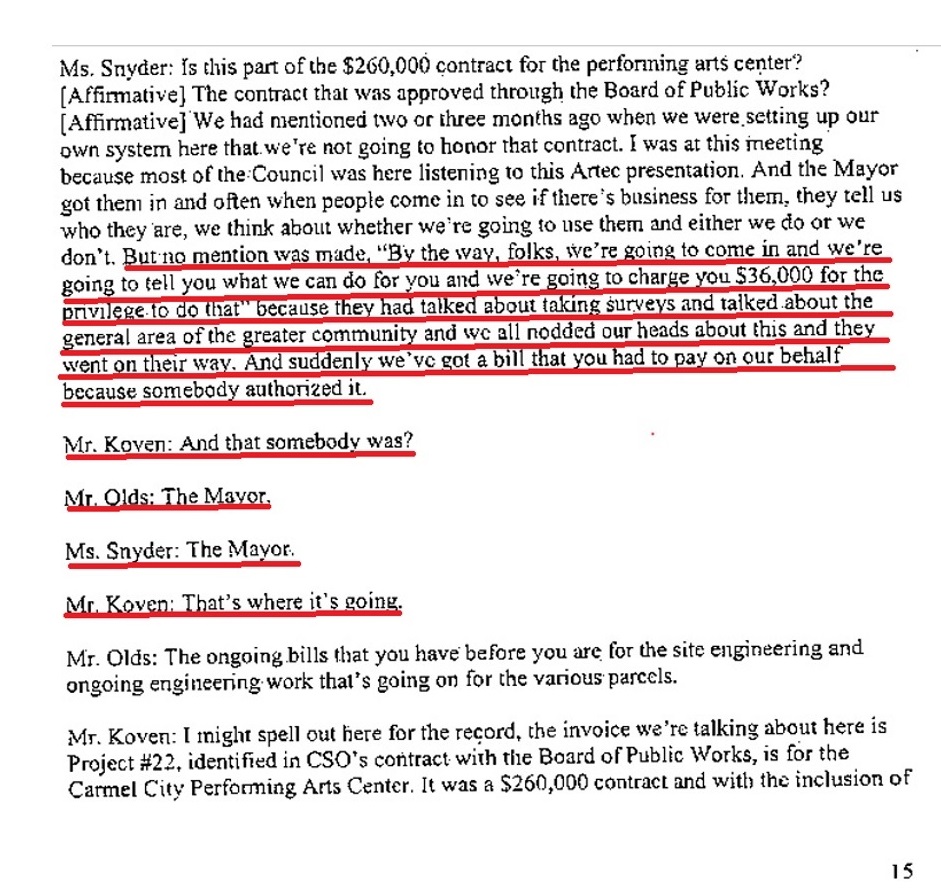
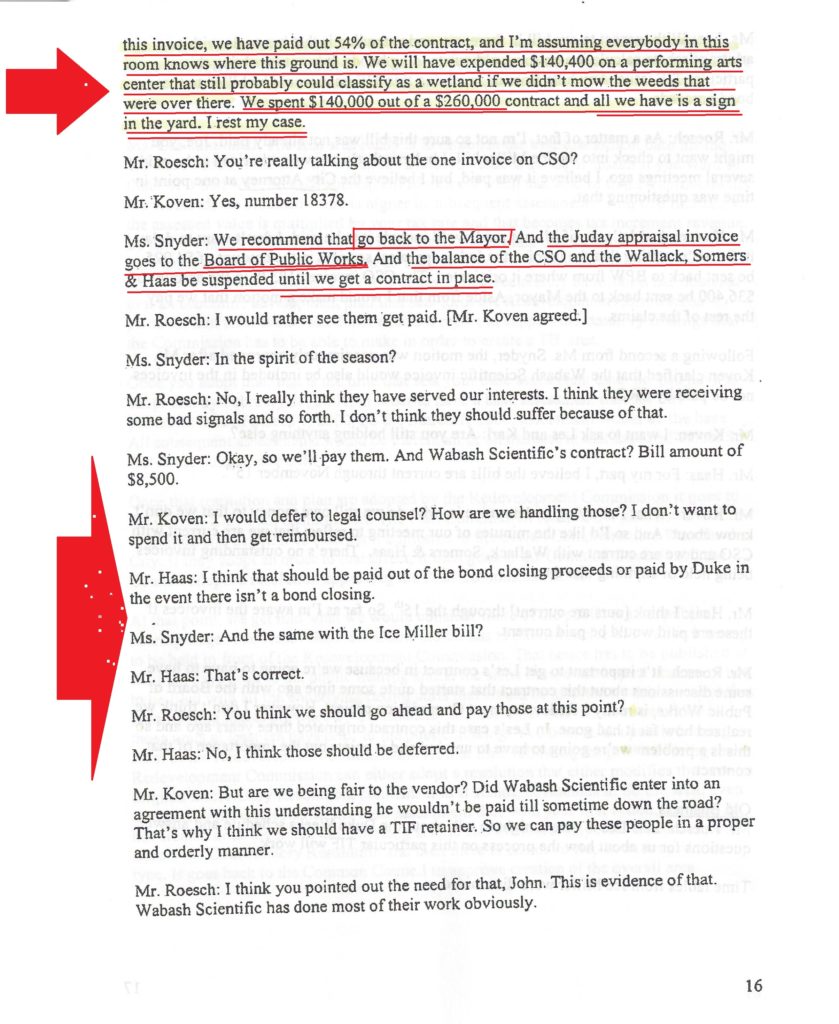
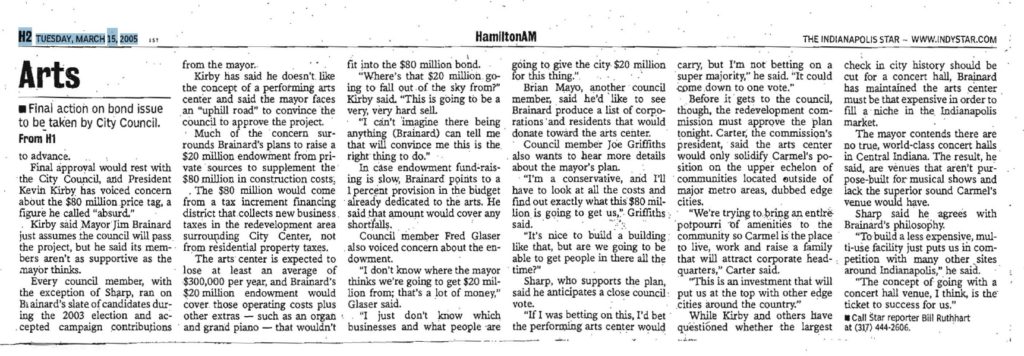

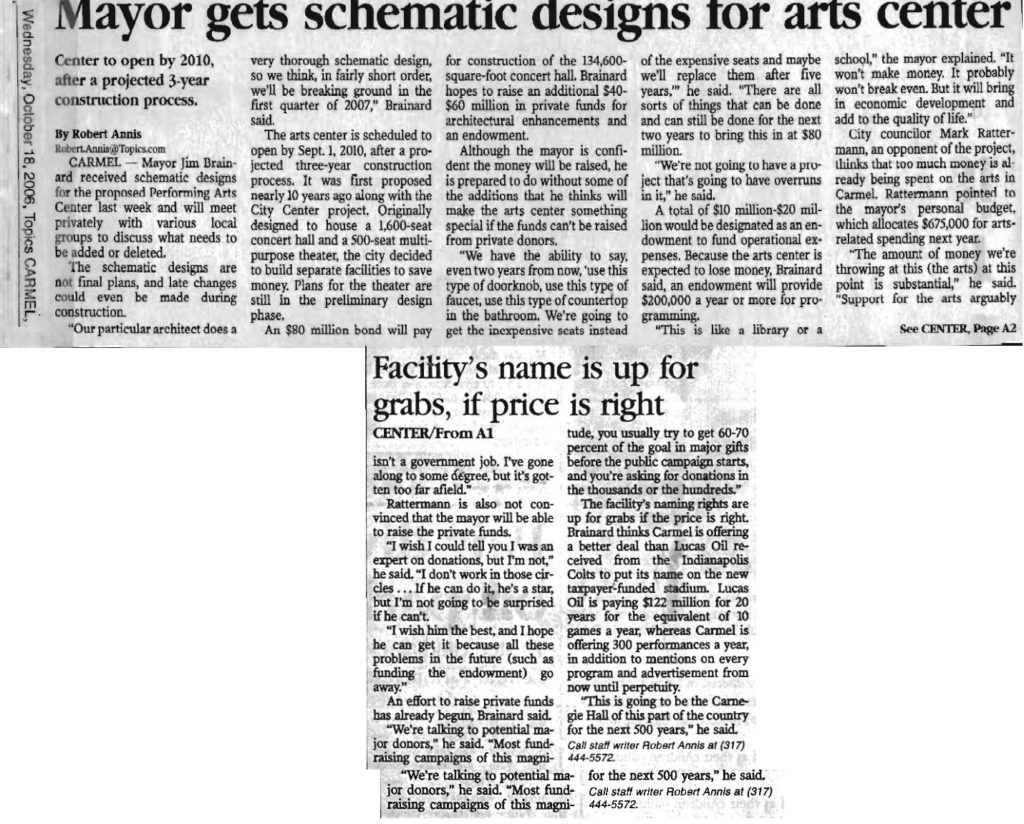

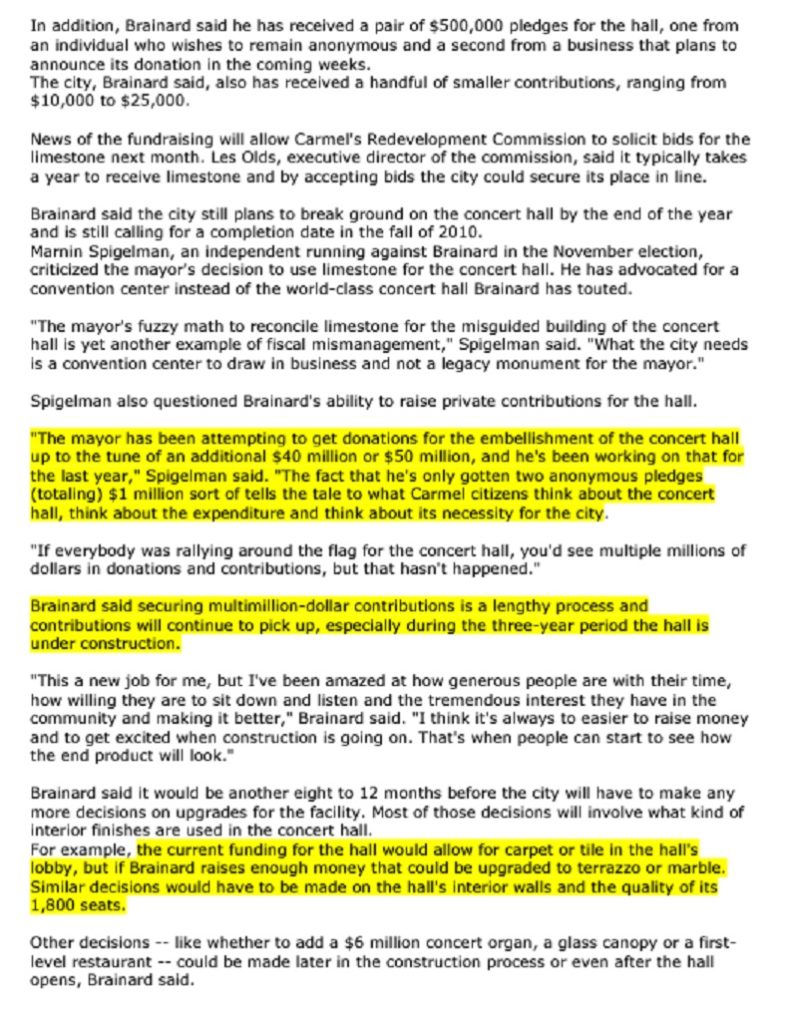
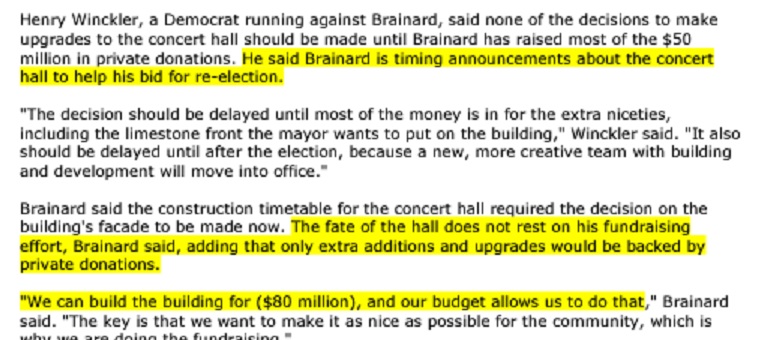
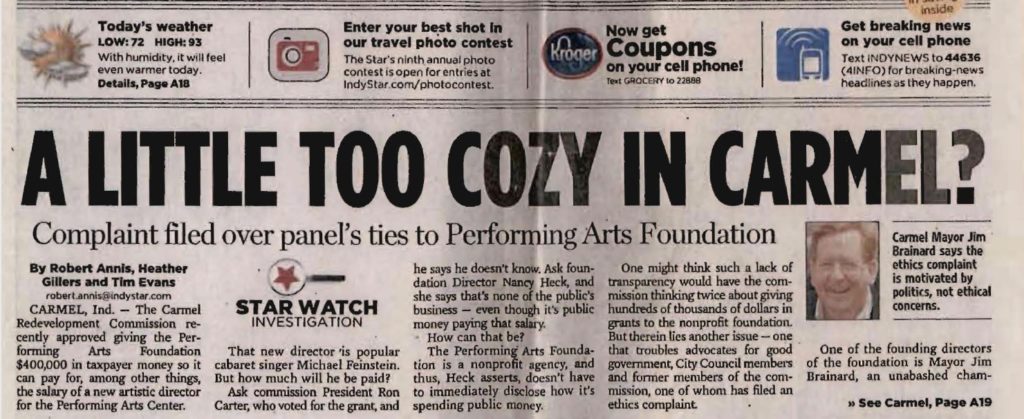
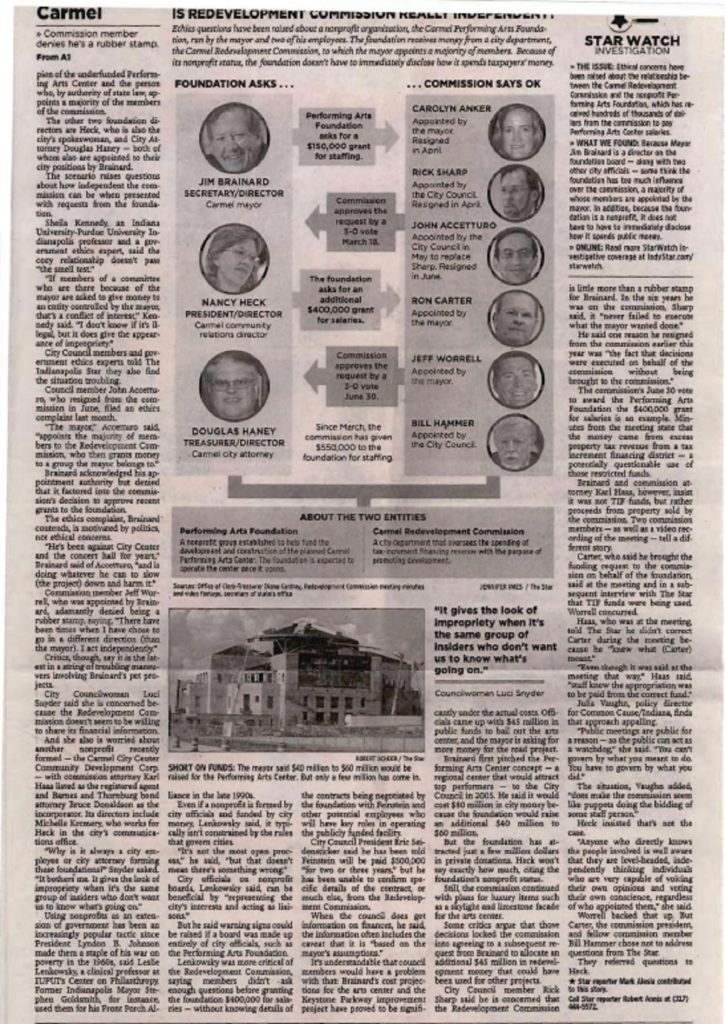
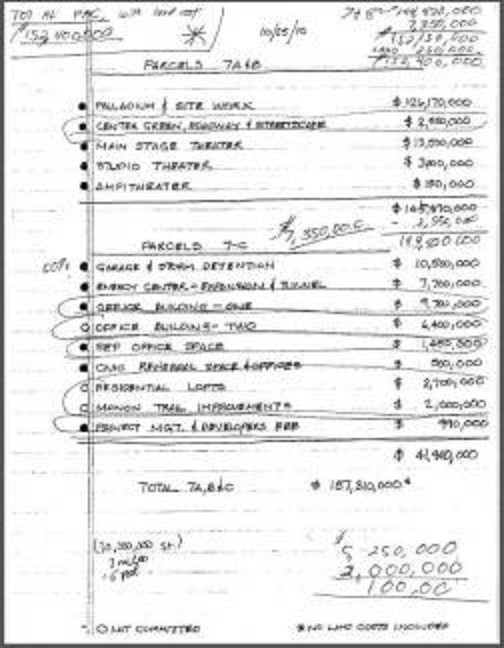
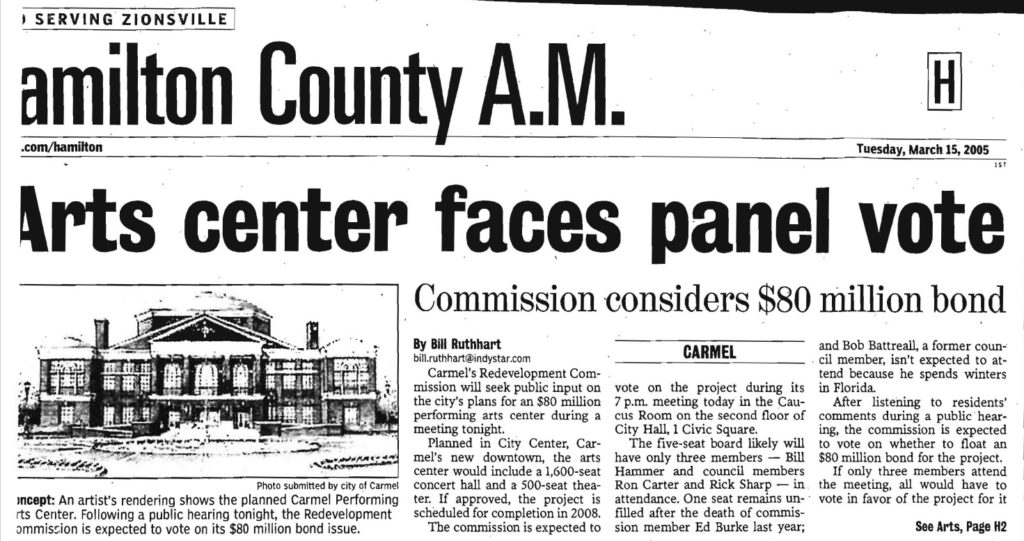
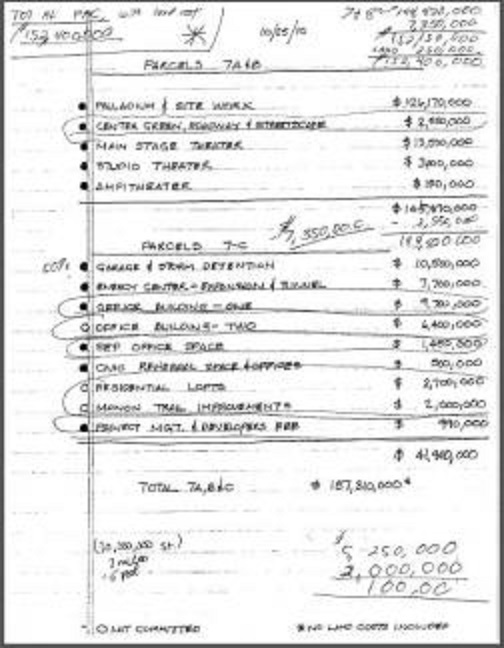

Sales of tickets like “Sting” go on sale to 501c donors of the Palladium first.
Show is “sold out” when offered to the public. Public can buy a ticket on the secondary market for a mark-up from $700 to $2500 from a Palladium performing Art’s Center member at 10:05 a.m. when the tickets went on sale to non-members at 10 a.m.
Smells funny to me, abuse of 501c privledge.